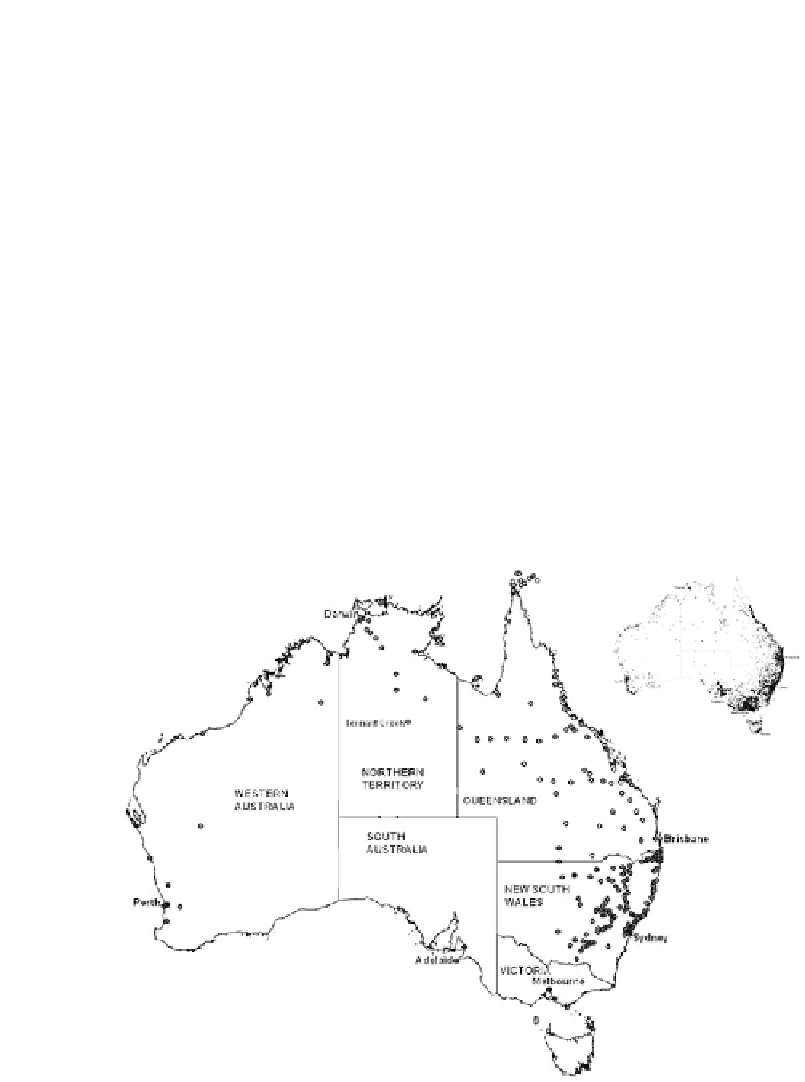Environmental Engineering Reference
In-Depth Information
dispersal events within and between continents, allowing it to expand its range
globally from its origin in Africa. Its global emergence and resurgence can be attrib-
uted to factors including urbanization, transportation, changes in human movement,
and behavior, resulting in dengue running second to malaria in terms of human mor-
bidity and mortality [3, 4]. Global historical collections and laboratory experiments on
this well studied vector have suggested its distribution is limited by the 10°C winter
isotherm [5], while a more recent and complex stochastic population dynamics model
analysis suggests the temperature's limiting value to be more towards the 15°C yearly
isotherm [6].
While historical surveys in Australia have indicated that
Ae. aegypti
occurred over
much of the continent (see Figure 1), its range has receded from Western Australia, the
Northern Territory and NSW over the last 50 years. It is now only found in Queensland
[7, 8], although recent incursions into the Northern Territory have required costly
eradication strategies [8]. The signifi cant reduction in vector distribution has been
attributed to a combination of events including the introduction of reticulated water,
which reduced the domestic water storage requirements of households that had pro-
vided stable larval sites [7, 9], as well as the removal of the railway-based water stor-
age containers hypothesized as being responsible for the long distance dispersal events
of
Ae. aegypti
into rural regions in NSW via steam trains [7, 10].
Figure 1.
Map of Australia showing the 234
Ae. aegypti
collection sites.
Almost all localities (except
site 219 and 220) can be regarded as historical collections while red sites indicate historical sites
where
Ae. aegypti
is no longer found and green sites are regarded as contemporary sites, collected
since 1980. Top right map displays the current Australia resident population distribution and each
dot represents approximately 1,000 people (
Source
: Australian Demographic Statistics (3101.1)).
















Search WWH ::

Custom Search